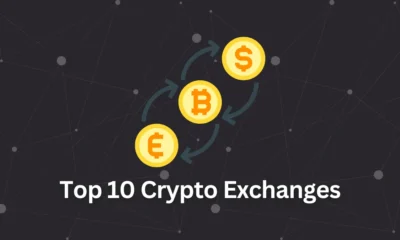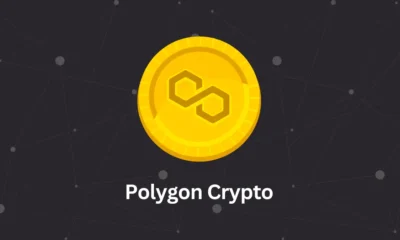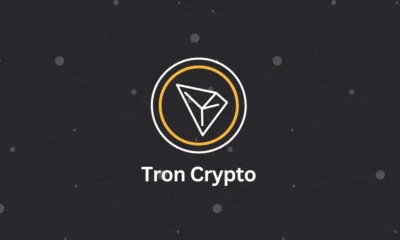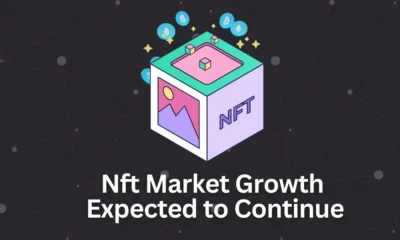Market Updates
HOW CRYPTOCURRENCIES MAY IMPACT THE BANKING INDUSTRY
Banking industry systems and even into a new alternative for carrying out trade via digital means for both individuals and businesses.
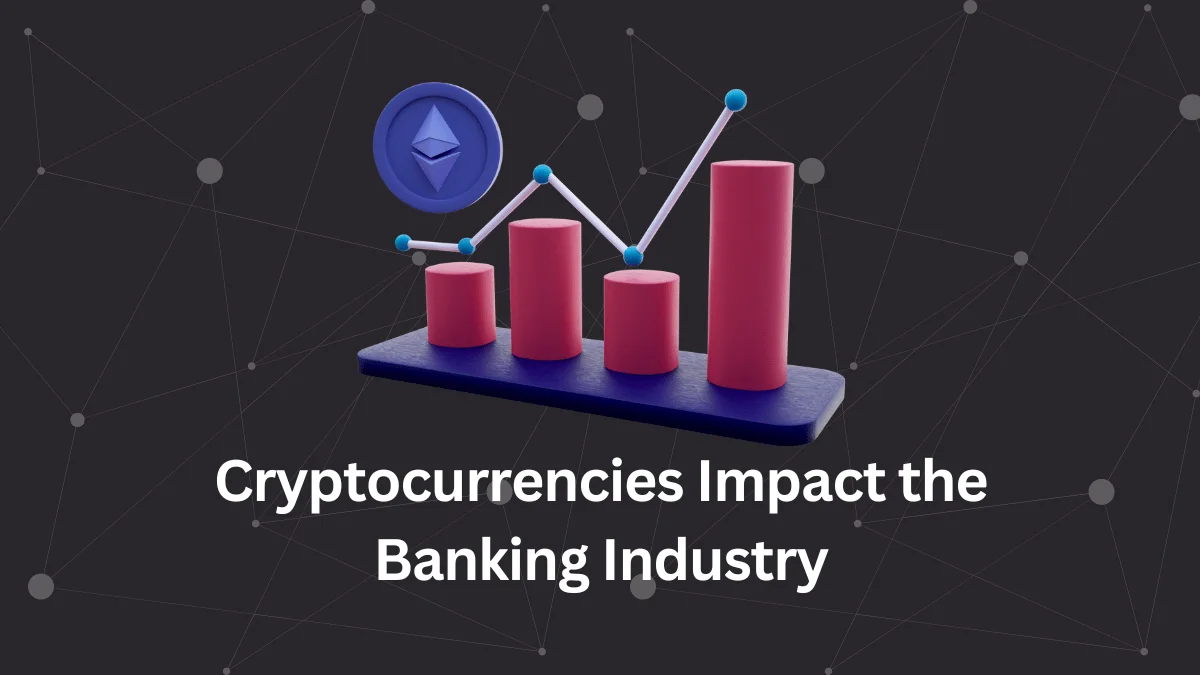
The world of Cryptocurrencies has grown into an innovative hurdle to the traditional banking industry systems and even into a new alternative for carrying out trade via digital means for both individuals and businesses. Whether or not the banks are ready to absorb these digital assets, they are standing at a crossroads where an inevitable shift is set to happen and the long-term metamorphosis is becoming real. This essay technically outlines the banking future as cryptocurrency comes into play as it looks at the various elements of the Banking Industry such as financial inclusivity, payment systems, regulatory challenges, and the future landscape of banking.
Financial Inclusivity
Cryptocurrencies, with their capacity to financially empower, stand out as one of the most crucial implications. The corresponding practice of traditional banking systems involves rejecting a significant amount of the global population for many apparent reasons formerly based on the provision of identity-proof documentation of address and sources of income. However, cryptocurrencies have their own set of advantages as well. Taking this into account, cryptocurrencies are decentralized and directly accessible to every person in the world with an internet connection. With the democratization of financial services, there is a strong possibility of economically empowering millions who do not have easy access to the conventional banking industry.
Therefore, the estimated seven billion people on the planet, who were previously marginalized from the global financial system, can consider partaking in the process.
Disruption of Payment Systems
Digital coins allow new models of money procession. In very simple terms, they offer faster and cheaper transactions made by learning from previous mistakes of the regular banking system. An instance is a cross-border transaction that, usually, takes many days and is highly charged in fee.
However, with the use of cryptocurrencies, you can pay almost instantly and within fractions of the cost, a factor that offers an evident advantage over the current method of paying money employed by other parties around the world. It is the reason for the establishment of this efficiency, as there is no involvement of any intermediary being the banks or payment gateways. With the development and wider adoption of cryptocurrency in the economy, banks will be forced to come up with improved systems to be able to compete effectively.
Decentralization vs. Centralization
The decentralized nature of cryptocurrencies poses a stark contrast to the centralized model of the traditional banking industry. Decentralized finance (DeFi) platforms, which operate on blockchain technology, offer various financial services without the need for central authorities or intermediaries. This shift towards decentralization could redefine the role of banks, compelling them to adapt by adopting blockchain technology themselves or by finding new ways to add value for their customers.
Cryptocurrencies were born to bring up a new level of competitiveness to the financial industry, with their objective to replace the old banking industry models and substitute the means of traditional transactions with new instruments for individuals and businesses through blockchain technology.
As more and more of these digital assets get more acceptance in society the carbon cost eventually begins to rise and their usage becomes more widespread, the banking sphere finds itself at the crossroads of reform and chances of probably transformation. This blog post investigates the potential effect that cryptocurrencies may have on the banking industry, some areas will be covered such as financial inclusion, payment systems, regulatory issues, and the eventual look-like banking sector.
Financial Inclusivity
Apart from other positive effects of cryptocurrencies, we can also point to their pace and capability to help people become financially included. Traditional banking industry systems often exclude a considerable portion of the global population due to stringent requirements for opening accounts, such as proof of identity, address, and income. In contrast, cryptocurrencies, by nature, are decentralized and accessible to anyone with an internet connection. Granted, the financial services would spread to millions of intellectuals who didn’t have access to global networks and this increased connection would facilitate their participation in the sector.
Disruption of Payment Systems
Cryptocurrencies represent a completely new implementation for payment systems. This is achieved by reducing the (a lot of shorter words) of transaction processing, decreasing banking industry service charges, and improving security measures adopted. For instance, cross-border payments, which typically take days to process and come with high fees, can be completed within minutes at a fraction of the cost of cryptocurrencies. They succeed due to the fact they avoid any involved parties like banks and payment processors. The time comes when more and more cryptocurrencies are being used in the world economy; banks that wish to remain competitive will have to work on the issue of their payment tools updating and innovating.
Decentralization vs. Centralization
The decentralized nature of cryptocurrencies poses a stark contrast to the centralized model of the traditional banking industry. Decentralized finance (DeFi) platforms, which operate on blockchain technology, offer various financial services without the need for central authorities or intermediaries. As a result of this, the offices of centralized banks could diminish to the point where they have new functions, either by accepting blockchain or by finding other ways to contribute to value generation for their customers.
Crypto Guides
Top 10 Crypto Exchanges for 2024: Best Platforms for Digital Currency
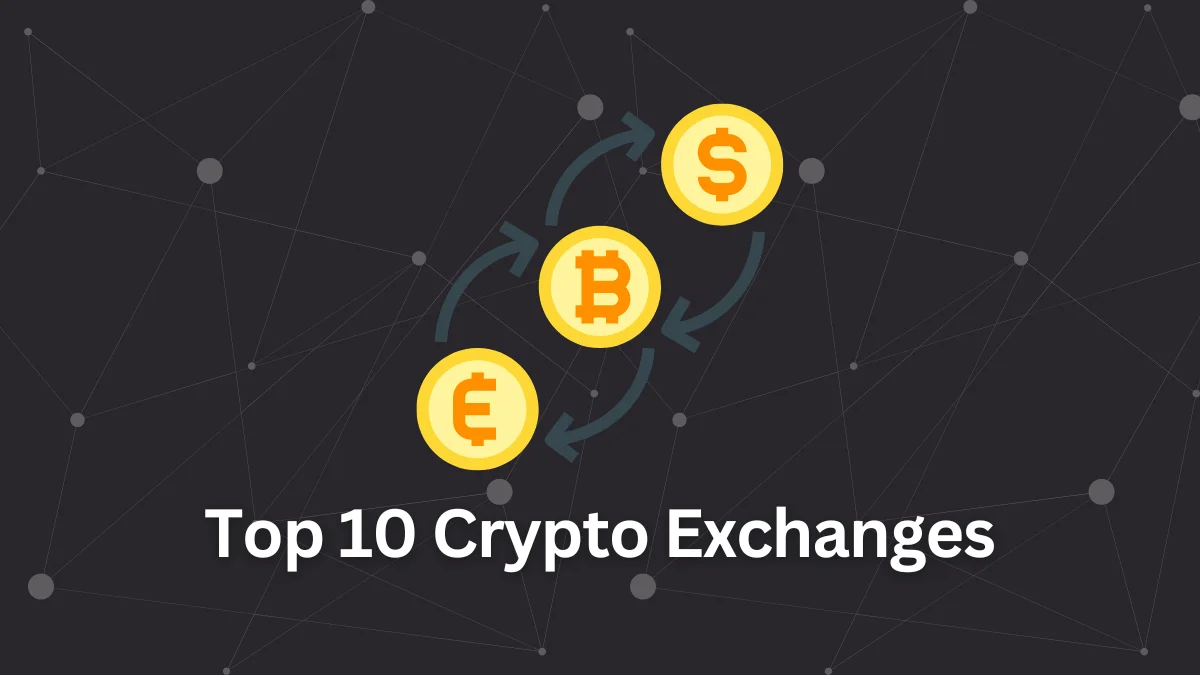
In the world of cryptocurrency, choosing the right exchange can make all the difference in your trading experience. With such a lot of alternatives to be had, finding a steady platform, person-friendly, and gives aggressive expenses is important. Whether you are a seasoned trader or just starting, this guide will help you navigate through the top 10 crypto exchanges of 2024.
CRYPTO EXCHANGE CURRENCIES
1. Binance
Overview
Binance is one of the largest and most popular crypto exchanges globally. Known for its giant range of cryptocurrencies and superior trading features, Binance caters to both novices and experienced traders.
Key Features:
– Variety of Cryptocurrencies: Offers over 500 cryptocurrencies.
– Low Fees: Competitive trading fees, especially for high-volume traders.
– Advanced Tools: Provides a suite of trading tools and options.
Why It Stands Out:
Binance’s large selection of cryptocurrencies and advanced trading options make it a favorite among serious traders. Its low costs and sturdy security features are a testament to its enchantment.
2. Coinbase
Overview:
Coinbase is one of the most user-friendly exchanges available. It is ideal for beginners looking to buy and sell cryptocurrencies with ease.
Key Features:
– Ease of Use: Simple interface and easy account setup.
– Security: Strong security features and insurance protection.
– Educational Resources: Provides a range of educational materials for new users.
Why It Stands Out:
Coinbase’s user-friendly design and strong security measures make it an excellent choice for newcomers to the crypto exchange world.
3. Kraken
Overview:
Kraken is known for its strong security features and wide range of supported cryptocurrencies. It offers advanced buying and selling tools for more skilled customers.
Key Features:
– Security: High levels of security with a solid track record.
– Diverse Options: Supports a wide range of cryptocurrencies and fiat currencies.
– Advanced Trading: Features like margin trading and futures.
Why It Stands Out:
Kraken’s robust security and comprehensive trading options make it a solid choice for both beginners and advanced traders.
4. Bitfinex
Overview:
Bitfinex is a popular choice for traders looking for advanced features and high liquidity. It gives a wide variety of cryptocurrencies and trading pairs.
Key Features:
– High Liquidity: Offers high liquidity and advanced trading options.
– Varied Cryptocurrencies: Supports a large number of cryptocurrencies.
– Advanced Features: Includes margin trading and lending.
Why It Stands Out:
Bitfinex’s advanced trading features and high liquidity make it ideal for experienced traders looking for more sophisticated tools.
5. Huobi
Overview:
Huobi is a global crypto exchange with a strong presence in Asia. It presents a complete trading platform with a wide variety of cryptocurrencies.
Key Features:
– Global Reach: Operates in multiple countries with strong security measures.
– Diverse Coins: Supports a broad range of cryptocurrencies.
– Advanced Trading Tools: Offers various trading options and tools.
Why It Stands Out:
Huobi’s global presence and extensive range of cryptocurrencies make it a versatile platform for traders around the world.
6. KuCoin
Overview:
KuCoin is known for its user-friendly interface and extensive selection of cryptocurrencies. It also offers features such as staking and futures trading.
Key Features:
– User-Friendly: Easy to navigate with a simple interface.
– Wide Range: Supports many cryptocurrencies and trading pairs.
– Additional Features: Staking and futures trading available.
Why It Stands Out:
KuCoin’s ease of use and additional features like staking make it a popular choice for both beginners and experienced traders.
7. OKEx
Overview:
OKEx is a comprehensive trading platform offering a variety of digital assets and trading options. It is known for its advanced trading tools and high liquidity.
Key Features:
– Advanced Tools: Provides a range of advanced trading tools and options.
– High Liquidity: Ensures efficient trading with high liquidity.
– Wide Range: Supports numerous cryptocurrencies and trading pairs.
Why It Stands Out:
OKEx’s advanced tools and high liquidity make it a strong choice for traders seeking a robust trading experience.
8. Gemini
Overview:
Gemini is a regulated exchange based in the U.S., known for its emphasis on security and compliance. It offers a secure platform for trading various cryptocurrencies.
Key Features:
– Regulated: Compliant with U.S. regulations and security standards.
– Security: Strong security features and insurance protection.
– Ease of Use: User-friendly platform with educational resources.
Why It Stands Out:
Gemini’s regulatory compliance and strong security measures make it a reliable choice for users prioritizing safety and regulation.
9. Bitstamp
Overview:
Bitstamp is one of the oldest crypto exchanges, known for its reliability and straightforward interface. It offers a range of cryptocurrencies and trading options.
Key Features:
– Reliability: Established exchange with a strong reputation.
– User-Friendly: Simple interface suitable for beginners.
– Range of Cryptos: Supports several major cryptocurrencies.
Why It Stands Out:
Bitstamp’s long-standing reputation and reliability make it a trusted platform for both new and experienced traders.
10. Gate.io
Overview:
Gate.Io gives a wide style of cryptocurrencies and revolutionary trading talents. It is thought for its competitive fees and numerous trading options.
Key Features:
– Variety: Supports a large number of cryptocurrencies.
– Innovative Features: Includes features like margin trading and lending.
– Competitive Fees: Offers low trading fees and costs.
Why It Stands Out:
Gate.io’s extensive range of cryptocurrencies and innovative features make it a valuable platform for traders looking for variety and flexibility.
Choosing the right crypto exchange depends on your individual needs and preferences. Each of those structures has its strengths, so recollect what features count number maximum to you—whether it’s advanced buying and selling equipment, protection, or a consumer-pleasant interface. By choosing the right alternative, you can enhance your shopping for and promote enjoyment, and make the maximum from your investments in the ever-evolving global of cryptocurrencies.
Market Updates
NFT MARKET GROWTH EXPECTED TO CONTINUE
NFTs has expanded dramatically, including intellectual property, real estate, music, movies, in-game items, and video games.
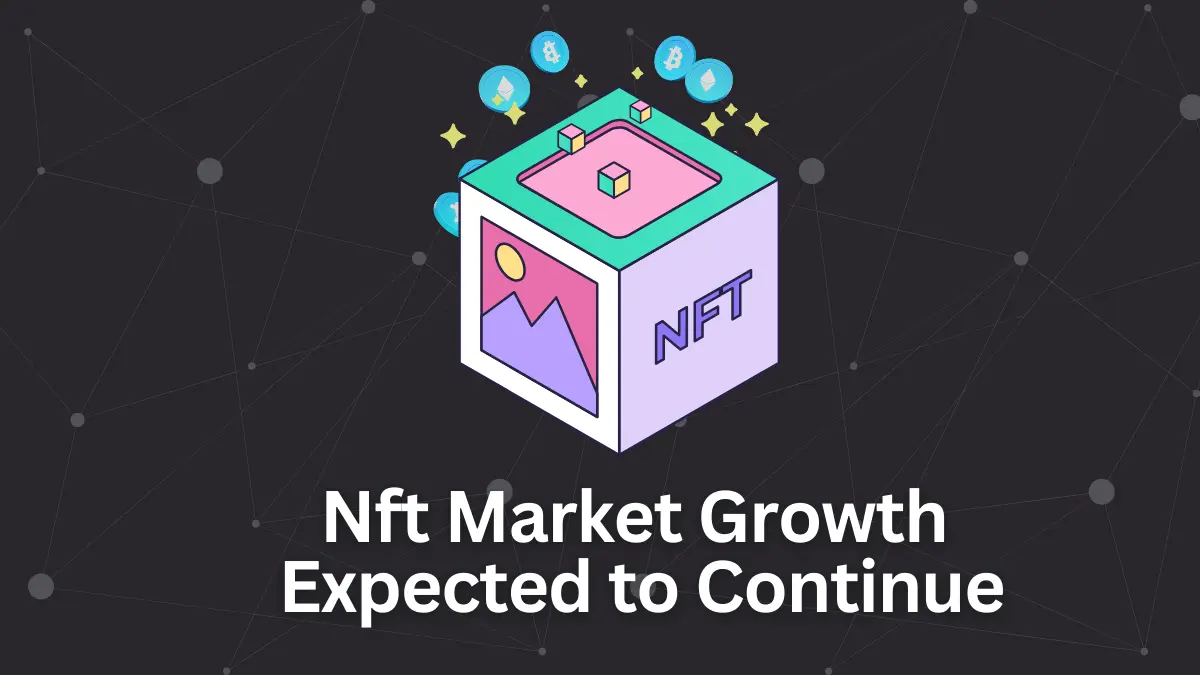
A wide spectrum of stakeholders, including investors, collectors, artists, and technologists, have expressed interest in the Non-Fungible Token (NFT) market since its introduction. Our understanding of digital ownership and value has completely changed as a result of NFTs’ exceptional capacity to securely and irreversibly reflect provenance and ownership of both digital and physical assets. Looking ahead, several significant patterns and variables indicate that the rise of the NFT market is not only anticipated to continue but may even pick up speed, changing a multitude of industries in the process.
The NFT Market’s Development
It has had an incredible journey from being a niche idea to becoming widely recognized. It was initially mostly connected to digital collectibles and art, thanks to websites like Open Sea and Crypto Kitties that opened up new avenues for online communication.
However, the range of goods covered by NFTs has expanded dramatically, including intellectual property, real estate, music, movies, in-game items, and video games.
Because more sophisticated and flexible NFT products can now be made, the NFT ecosystem has grown as a result of the advances made in smart contracts and blockchain technology.
Additionally, the public’s understanding and acceptance of NFTs have increased dramatically as a result of their integration into well-known social media platforms, celebrity and international brand endorsements, and other factors.
Key Drivers of NFT Market Growth
Increasing Digitalization of Assets
As our world becomes increasingly digital, the demand for digital ownership and verification tools grows. It remedies the digitalization issue by giving a safe and transparent means of proving ownership of digital goods. The realm of art is not the only industry affected by this digital transition; media, entertainment, and online retail are just a few industries where digital assets are vital.
Expanding Use Cases
It is finding new applications across various sectors, from digital identity verification to supply chain management. For example, It can be used to authenticate and track the provenance of luxury goods, reducing counterfeiting. It is giving artists in the entertainment sector new opportunities to engage with their audience and directly monetize their work.
Innovation in Finance
There are now more investment options thanks to the financialization of schemes like fractional ownership and NFT-backed loans. More people can now invest in high-value It and holders can leverage their holdings without having to sell them thanks to these improvements. We may anticipate more advanced financial products and services based on It as financial institutions and fintech businesses continue to investigate the possibilities of it.
Social and Community Involvement
A growing trend toward community-driven enterprises and economics is centered on It. It is being used by projects like Decentral and The Sandbox to build decentralized virtual worlds where people may trade, own, and develop virtual assets and land. These platforms create strong communities around common interests and objectives by serving as new forums for social engagement, education, and business in addition to providing entertainment.
Challenges and Considerations
The market confronts several obstacles that could affect its growth trajectory, notwithstanding the positive prognosis. Concerns over the potential environmental impact of blockchain technology, the need for more robust regulatory frameworks, and issues of intellectual property rights and copyright are some of the most significant issues that need to be resolved. Investors are also exposed to risks because of the market’s volatility and the speculative nature of many It trades.
The Path Ahead
In the future, cutting-edge technology like augmented reality, virtual reality, and artificial intelligence might become even more desirable and advantageous. These advancements open up new possibilities for it-based services and applications by producing more dynamic and captivating digital experiences.
Furthermore, as blockchain technology advances, improvements in scalability, efficiency, and sustainability are envisaged, addressing some of the current problems and constraints associated with it. Enabling a more integrated and accessible environment will be made possible by the continuous development of cross-chain interoperability. With the ability to completely alter digital ownership and value generation in the digital age, the NFT market is at a turning point in its development.
In the future, working together is super important for it to keep growing. Right now, they’re already being used in lots of different ways, with more people getting involved and new tech making things better. But there are still some problems to fix. Everyone involved in it needs to cooperate to make sure lots of different businesses can use it and handle the challenges of a fast-changing industry. The future of it is cool because they’re expected to become a big part of the digital economy as it keeps growing.
Market Updates
CRYPTOCURRENCY AND DECENTRALIZED FINANCE (DEFI)
Crypto and DeFi are at the moment presented as the driving force of the financial technology revolution as they offer a fundamentally fresh approach to transaction agreement and asset management.
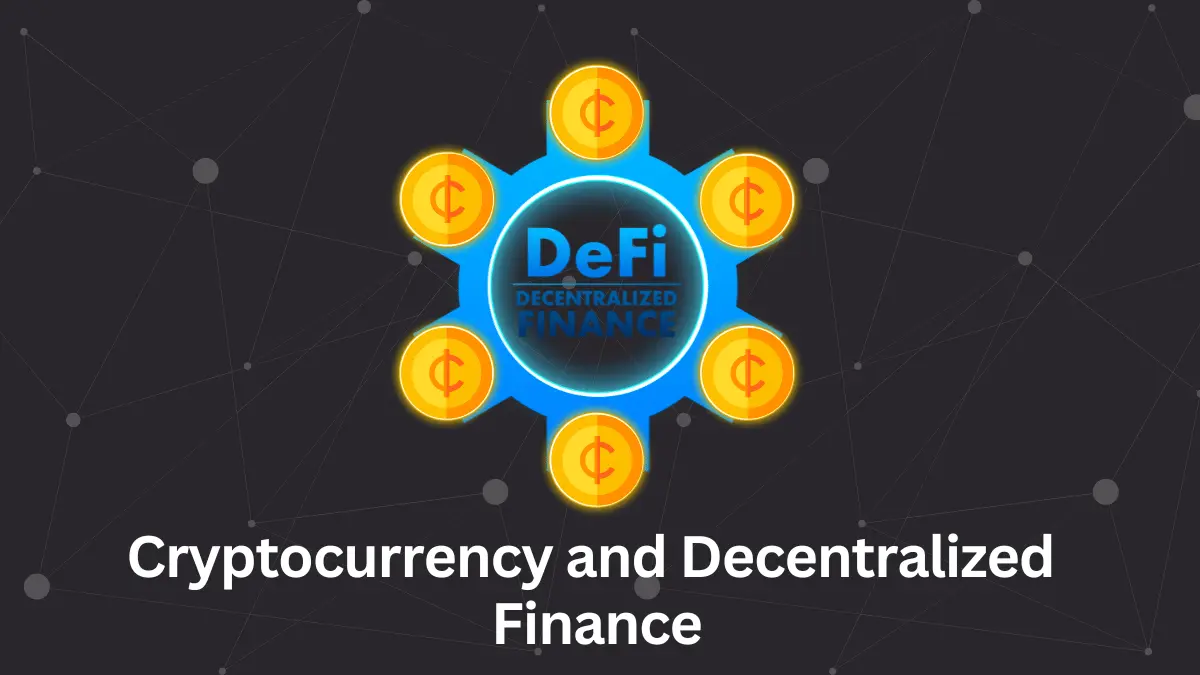
Writing a comprehensive blog on cryptocurrencies and decentralized finance (DeFi) demands going deeper into the contrary universe of blockchain technology that shows the ground-breaking uses of it and the new financial transactions’ paradigms. This blog will explain the inception of how the cryptocurrency and DeFi function and also their prospects and downsides and will also try to forecast the outcome on the globe. Cryptocurrencies and DeFi are relatively new phenomena that have been gaining prominence in the financial world, and their emergence has disrupted traditional financial systems, challenging the dominance of banks, securities exchanges, and other intermediaries.
Crypto and DeFi are at the moment presented as the driving force of the financial technology revolution as they offer a fundamentally fresh approach to transaction agreement and asset management. Cryptocurrency is the virtual or digital type of currency that uses cryptography (i.e. kind encrypted) for transaction security while instead DeFi stands for the decentralized finance applications that take tomorrow’s financial services and apply them to the Ethereum blockchain.
The Evolution of Cryptocurrency
Cryptocurrency involvement with Bitcoin was in 2009 by some group persons or by an individual under the known pseudonym of Satoshi Nakamoto. It was implemented as an electronic cash system in which individuals can enter into a financial transaction without any mediator. Ever since its emergence, the cryptocurrency market has grown significantly over the years and is now filled with various digital assets that not only function as a medium of exchange, but also as a store of value, and a tool for investment and speculation.
Defi: Redefining Financial Services
The term DeFi stands for Decentralized Finance which stresses the concept of Decentralized cryptocurrency by its application in different financial services like loans, saving and trading. DeFi platforms, built on a blockchain platform, were created to operate without any financial intermediaries like banks, brokerage firms, or exchanges. Thus, financial services become more democratic, and the capabilities to do even better with a minimum cost and the highest efficiency rate get to the highest possible level. Crypto and DeFi, as an emerging field, offer numerous opportunities for monetary and financial freedom.
The crypto movement and DeFi play a vital role in the future of finance and offer a myriad of advantages. They ensure visibility on each transaction, security using blockchain technology, and transactional activities with lowered cost and time. Also, the security of DeFi makes it clear that it is serving the populations of the unbanked and underbanked not only locally but internationally being a potential way to promote financial inclusion.
Challenges and Risks
Despite their huge possibilities, the future for cryptocurrency and DeFi is full of uncertainty. The volatility of cryptocurrencies, often meaning sharp changes in value, is the biggest risk; also regulation is a current problem in the DeFi sphere but this raises questions about consumers’ rights, possible fraud, and financial stability. In addition, systems may be unsuitable for different reasons like low levels of capabilities and advanced technologies which limits their implementation.
The Future of Finance
The taboo on the cryptocurrency and Decentralized DeFi future is a constantly present subject of speculation and debate. With the progressive technology and dynamic regulations, it will be very likely to see this wide acceptance in the field and use of these electronic assets and orbit in the core of the financial framework. The rise of stablecoins and DeFi insurance is a testament to the dynamic nature of the sector which addresses existing vulnerabilities and risks of ongoing exploitations.
Regulatory Landscape
The very fast development of cryptocurrency and the Decentralized DeFi regulatory framework is followed by individual states’ and financial institutions’ efforts to fit these innovations into the current legal system, without affecting consumers’ protection and without compromising the financial stability too much. Policy-makers will have to consider regulations in a meaningful way, regardless of whether the result is to spur innovation or stifle it.
Investment into Cryptocurrency and the Decentralized Finance Industry.
Cryptos, digital assets, and DeFi are opening new horizons where individual freedom and flexibility are the characteristics that come together with the hidden risks of volatile markets. Taking into consideration aspects such as investor research, grasping the technologies involved, and professionally considering the volatility and regulatory uncertainties, prospective investors should be mindful and act reasonably. Diversification and a long-term approach can help curtail some of the risks to society that come because of these new and innovative financial tools.
Crypto and Decentralized DeFi are changing the face of the global financial system, categorically differentiating themselves from the old-school one, thus paving the way for new means to conduct financial activities. Despite carrying a set of obstacles and uncertainties, they are worth trying as, in general, they have the potential to reshape the world pay system. In conclusion, as technology advances and spreads, we will see more and more the prominence of these technological tools in the determination of the financial future.
In the end, the trajectory of cryptocurrency and Decentralized DeFi will depend on a complex interplay of technological innovation, regulatory frameworks, and market dynamics. Stakeholders across the financial ecosystem must navigate these factors carefully to unlock the full potential of these revolutionary technologies.
-
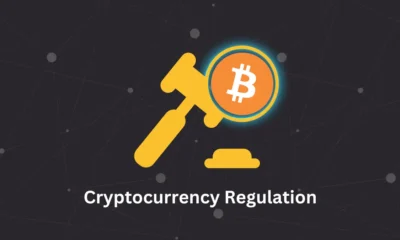
 Regulations1 year ago
Regulations1 year agoCRYPTOCURRENCY REGULATION
-
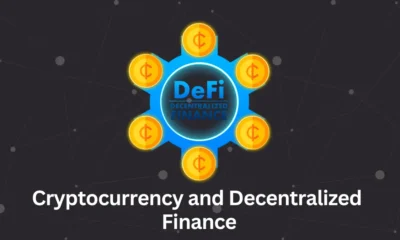
 Market Updates1 year ago
Market Updates1 year agoCRYPTOCURRENCY AND DECENTRALIZED FINANCE (DEFI)
-
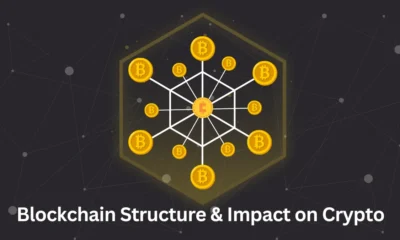
 Crypto Guides1 year ago
Crypto Guides1 year agoBLOCKCHAIN STRUCTURE AND IT’S IMPACT ON CRYPTOCURRENCY PRICES
-
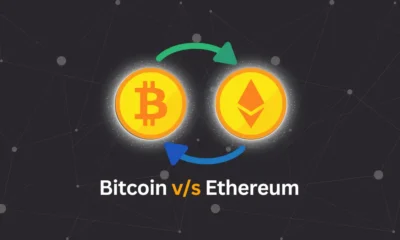
 Investment Tips1 year ago
Investment Tips1 year agoBITCOIN AND ETHEREUM, KNOW WHICH ONE IS BEST
-
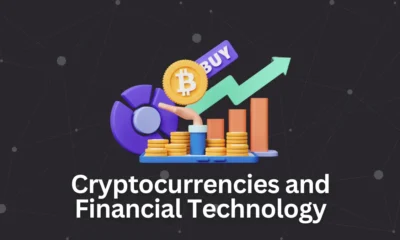
 Crypto Guides1 year ago
Crypto Guides1 year agoCRYPTOCURRENCIES AND FINANCIAL TECHNOLOGY
-

 Crypto Guides1 year ago
Crypto Guides1 year agoBEST CRYPTO FREELANCE WRITING
-
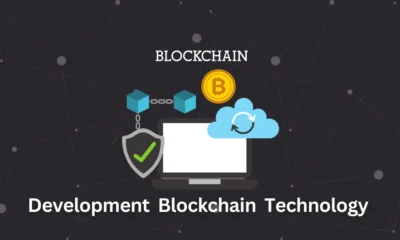
 Blockchain Technology1 year ago
Blockchain Technology1 year agoDEVELOPMENT OF BLOCKCHAIN TECHNOLOGY
-

 Blockchain Technology1 year ago
Blockchain Technology1 year agoCAN THE BLOCKCHAIN BE HACKED

